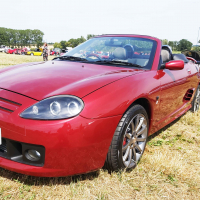Topic
Lower Front Ball Joint Replacement 7 years 9 months ago #170069
-

- SundanceUK
- Offline
- Senior MGer
-

- MG TF 160 owner in Staffordshire
- Posts: 1098
- Thanks: 594
Lower Front Ball Joint Replacement 7 years 9 months ago #170077
-

- SundanceUK
- Offline
- Senior MGer
-

- MG TF 160 owner in Staffordshire
- Posts: 1098
- Thanks: 594
Lower Front Ball Joint Replacement 7 years 9 months ago #170201
-

- SundanceUK
- Offline
- Senior MGer
-

- MG TF 160 owner in Staffordshire
- Posts: 1098
- Thanks: 594
Lower Front Ball Joint Replacement 7 years 2 months ago #176137
-

- David Aiketgate
- Offline
- David
-

- mgf mk2 freestyle mpi 16" wheels, in Anthracite.
- Posts: 20139
- Thanks: 4388
Lower Front Ball Joint Replacement 3 months 1 week ago #205473
Although it looks crude it is very effective. Also bear in mind that the camber on a TF is plus or minus one degree from 4.50' so from 3.50' to 5.50' so not a very precise setting anyway.
Time to create page: 1.062 seconds






